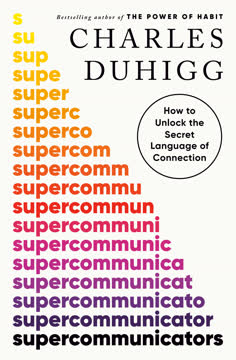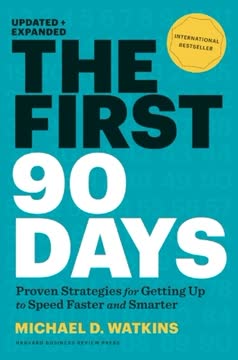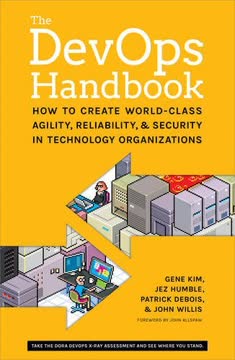Key Takeaways
1. The mind's eye determines our reality and potential
"The mind's eye makes it possible to achieve just about anything we want—the important element is to focus on the positive outcome."
Focus shapes reality. Our mind's eye acts as a filter, shaping our perception of the world and influencing our actions. It determines whether we see opportunities or obstacles, possibilities or limitations. By consciously directing our focus, we can overcome challenges and achieve our goals.
Visualization is powerful. Athletes, artists, and successful leaders use mental imagery to envision their desired outcomes. This practice primes the brain for success and helps overcome obstacles. By regularly visualizing positive outcomes, we can rewire our brains to seek out opportunities and solutions rather than dwelling on problems.
Overcoming negativity bias. Our brains are naturally wired to focus on potential dangers and negative outcomes. To counteract this, we must actively train our mind's eye to seek out the positive aspects of situations. This doesn't mean ignoring problems, but rather approaching them with a solution-oriented mindset.
2. Bonding is essential for human well-being and success
"Bonding is often counterintuitive, requiring us to focus on what the other person needs as well as knowing what we want—it allows others to have an impact on us and, in turn, us to elicit a response from them."
Bonding cycle. The process of bonding involves four stages: attachment, bonding, separation, and grieving. Understanding and navigating this cycle is crucial for maintaining healthy relationships and emotional well-being.
Benefits of bonding:
- Improved physical and mental health
- Enhanced resilience in face of challenges
- Increased sense of belonging and purpose
- Better performance in personal and professional life
Broken bonding consequences:
- Psychosomatic illness
- Violence and aggression
- Addiction
- Depression
- Burnout
- Stress reactions
- Organizational conflict
3. Secure bases provide protection, comfort, and energy
"Secure bases are those people, goals, or things to which we bond in a special way. While we create many bonds, secure bases are special in that they give protection, comfort, and energy."
Types of secure bases:
- People (parents, mentors, friends, partners)
- Goals and aspirations
- Places (home, workplace)
- Objects (meaningful possessions)
- Beliefs and values
Functions of secure bases:
- Provide a sense of safety and security
- Encourage exploration and risk-taking
- Offer emotional support during challenges
- Shape our mental models and worldviews
Secure bases play a crucial role in developing self-esteem and resilience. They allow us to face challenges with confidence, knowing we have a foundation of support. In professional settings, leaders who act as secure bases for their teams foster trust, creativity, and high performance.
4. Effective conflict management leads to growth and creativity
"Put the fish on the table" and going through the bloody mess of cleaning the fish to prepare for the great fish dinner at the end of the day.
Embrace conflict. Rather than avoiding disagreements, view them as opportunities for growth, innovation, and deeper understanding. By addressing issues directly, we can prevent resentment and find creative solutions.
Keys to managing conflict:
- Separate the person from the problem
- Focus on interests, not positions
- Generate multiple options for mutual gain
- Use objective criteria to evaluate solutions
Benefits of effective conflict management:
- Improved relationships and trust
- Enhanced creativity and problem-solving
- Personal and professional growth
- Increased organizational effectiveness
5. Dialogue is the path to understanding and resolution
"Dialogue is a living experience of inquiry within and between people."
Elements of effective dialogue:
- Active listening
- Suspending judgment
- Voicing personal truths
- Respecting diverse perspectives
Overcoming blocks to dialogue:
- Passivity
- Discounting
- Redefining
- Over-detailing
True dialogue involves a mutual exchange of ideas and perspectives, leading to deeper understanding and shared meaning. It requires openness, vulnerability, and a willingness to be influenced by others. By engaging in authentic dialogue, we can bridge divides, resolve conflicts, and create innovative solutions.
6. Negotiation requires empathy, flexibility, and mutual benefit
"Negotiation is the process whereby interested parties resolve disputes, agree on courses of action, bargain for individual or collective advantage, and attempt to craft outcomes that serve their mutual interests."
Principles of effective negotiation:
- Focus on interests, not positions
- Generate options for mutual gain
- Use objective criteria
- Separate people from the problem
Negotiation process:
- Forming a bond
- Identifying needs and interests
- Creating common goals
- Generating proposals and making concessions
- Reaching agreement
Successful negotiation involves understanding the other party's perspective, maintaining flexibility, and seeking win-win outcomes. By focusing on mutual interests and maintaining a positive relationship, negotiators can achieve lasting agreements that benefit all parties involved.
7. Emotional intelligence is crucial for personal and professional success
"Emotions are energy, and when energy is created, it must go somewhere. Use emotions for creating inspiration in yourself and others."
Components of emotional intelligence:
- Self-awareness
- Self-management
- Social awareness
- Relationship management
Benefits of emotional intelligence:
- Improved decision-making
- Enhanced leadership effectiveness
- Better stress management
- Stronger relationships
- Increased adaptability to change
Developing emotional intelligence involves recognizing and managing our own emotions, as well as understanding and influencing the emotions of others. By honing these skills, we can navigate complex social situations, build stronger relationships, and achieve greater success in both personal and professional spheres.
8. Living with a hostage-free state of mind empowers us to thrive
"To live with a hostage-free state of mind, we need to remember to act on our personal power by recognizing the choices being made."
Characteristics of a hostage-free mindset:
- Embracing personal responsibility
- Focusing on possibilities rather than limitations
- Maintaining a growth mindset
- Cultivating resilience and adaptability
Strategies for developing a hostage-free state of mind:
- Practice self-awareness and reflection
- Cultivate gratitude and appreciation
- Engage in continuous learning and growth
- Develop strong relationships and support networks
- Set meaningful goals and take action towards them
By adopting a hostage-free state of mind, we empower ourselves to overcome obstacles, seize opportunities, and create the life we desire. This mindset allows us to navigate challenges with grace, maintain a positive outlook, and continuously grow and evolve as individuals.
Last updated:
FAQ
What's Hostage at the Table about?
- Conflict and Leadership: The book explores how leaders can manage conflict, influence others, and enhance performance using the metaphor of being a "hostage."
- Bonding Cycle: It introduces the bonding cycle—attachment, bonding, separation, and grieving—as a framework for understanding relationships and conflict management.
- Personal Insights: George Kohlrieser shares experiences as a hostage negotiator, applying these lessons to personal and professional contexts.
Why should I read Hostage at the Table?
- Practical Strategies: Offers actionable strategies for conflict management, crucial for leadership roles.
- Emotional Intelligence: Emphasizes understanding emotions for effective conflict resolution.
- Real-Life Applications: Insights are applicable to everyday situations, aiding personal and professional growth.
What are the key takeaways of Hostage at the Table?
- Metaphorical Hostage Situations: We can be held hostage by emotions or circumstances, and the book offers ways to regain control.
- Secure Bases: Highlights the importance of secure bases—people or goals that provide support—for resilience and leadership.
- Conflict as Opportunity: Frames conflict as a growth opportunity rather than something to avoid.
What is the bonding cycle in Hostage at the Table?
- Four Stages: Consists of attachment, bonding, separation, and grieving, essential for relationships.
- Emotional Exchange: Bonding involves emotional energy exchange, leading to deeper connections.
- Impact of Loss: Navigating these stages effectively helps avoid feeling like a hostage in life.
How does George Kohlrieser define a secure base in Hostage at the Table?
- Source of Comfort: A secure base provides protection, comfort, and energy, enabling exploration and risk-taking.
- Resilience Influence: Helps manage focus from fear to opportunity, vital for resilience.
- Examples: Can include family, mentors, friends, or goals that provide direction and purpose.
How can I manage conflict effectively according to Hostage at the Table?
- Direct Address: "Put the Fish on the Table" encourages addressing issues directly to promote open dialogue.
- Separate Person from Problem: Focus on resolving issues without personalizing conflict, maintaining relationships.
- Mutual Respect: Approach conflicts with cooperation and respect, aiming for win-win outcomes.
What is the significance of emotional intelligence in Hostage at the Table?
- Understanding Emotions: Crucial for recognizing and managing emotions during conflicts.
- Relationship Building: High emotional intelligence fosters stronger bonds and effective navigation of interpersonal dynamics.
- Leadership Effectiveness: Leaders with strong emotional intelligence inspire and motivate teams, enhancing performance.
What are the five stages of emotion described in Hostage at the Table?
- Charge: Initial stage where emotions build up, creating physiological arousal.
- Tension: Intensified emotions create tension, potentially leading to physical symptoms.
- Discharge: Involves releasing emotional energy through expression, essential for emotional health.
How does Hostage at the Table address the concept of negotiation?
- Structured Process: Outlines negotiation as a process involving understanding needs and finding common ground.
- Ten Steps: Provides a ten-step framework for effective negotiation, emphasizing bonds and separating person from problem.
- Win-Win Solutions: Advocates for collaboration and mutual respect, achieving goals for both parties.
What techniques does the author suggest for managing emotions?
- Self-Awareness: Recognizing and understanding one's emotions is crucial for effective management.
- Perspective Taking: Encourages providing perspective to others, deescalating emotional situations.
- Taking Time Outs: Recommends breaks during high-stress situations for composure and clarity.
What are some effective strategies for developing resilience as outlined in Hostage at the Table?
- Make Connections: Building strong relationships is essential for emotional support and resilience.
- Accept Change: Embracing change helps adapt and find new paths forward.
- Focus on Goals: Setting realistic goals and taking decisive actions fosters purpose and direction.
What are the best quotes from Hostage at the Table and what do they mean?
- “The party isn’t over yet.”: Reflects maintaining a positive outlook despite challenges.
- “Put the fish on the table.”: Emphasizes addressing conflicts directly to prevent escalation.
- “People do not kill people; they kill things or objects.”: Highlights dehumanization in conflict and the importance of empathy.
Review Summary
Hostage at the Table receives mostly positive reviews, with readers praising its insights on conflict resolution, leadership, and personal growth. Many find the book's concepts applicable to both professional and personal life. Readers appreciate the author's unique perspective as a hostage negotiator and his ability to translate those skills to everyday situations. Some criticize the book for being repetitive or lacking depth in certain areas. Overall, reviewers recommend it for those interested in psychology, negotiation, and self-improvement.
Similar Books








Download PDF
Download EPUB
.epub digital book format is ideal for reading ebooks on phones, tablets, and e-readers.





